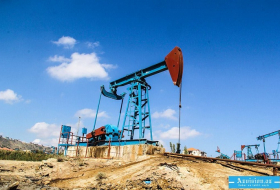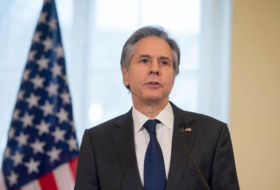Around 2.4% of global CO2 emissions come from aviation. Together with other gases and the water vapour trails produced by aircraft, the industry is responsible for around 5% of global warming.
At first glance, that might not seem like very big contribution. Except, only a very small percentage of the world flies frequently. Even in richer countries like the UK and the US, around half of people fly in any given year, and just 12-15% are frequent fliers.
Though there is no exact data, Dan Rutherford, shipping and aviation director at the International Council on Clean Transportation (ICCT), a US-based non-profit, estimates just 3% of the global population take regular flights. In fact, if everyone in the world took just one long-haul flight per year, aircraft emissions would far exceed the US’s entire CO2 emissions, according to ICCT analysis.

Looking for locations to visit closer to home during holidays can reveal surprising things about the places on your doorstep (Credit: Getty Images/Javier Hirschfeld)
For those of us that do fly, it is likely to make up a significant slice of our personal carbon footprint. This is because, mile for mile, flying is the most damaging way to travel for the climate. (Read about the Finnish town that is rationing carbon emissions.)
A return flight from London to San Francisco emits around 5.5 tonnes of CO2 equivalent (CO2e) per person – more than twice the emissions produced by a family car in a year, and about half of the average carbon footprint of someone living in Britain. Even a return flight from London to Berlin emits around 0.6 tonnes CO2e – three times the emissions saved from a year of recycling.
And emissions from planes are rising rapidly – they increased by 32% between 2013 and 2018. While improving fuel efficiency is gradually reducing the emissions per passenger, it is not keeping up with the rapid increase in total passenger numbers, which are projected to double in the next 20 years.
“You have fuel efficiency improvements on the order of 1% per year, and flights are increasing 6%,” says Rutherford, “It's not even close.”
Other substances, including mostly water in the form of contrails, as well as soot and nitrous oxides, all have a capability of trapping additional heat at flight altitude – Stefan Gössling
And it is not just the CO2 pumped out from jet engines that is having an effect.
“Other substances, including mostly water in the form of contrails, as well as soot and also nitrous oxides, all have a capability of trapping additional heat at flight altitude,” says Stefan Gössling, a professor at Linnaeus and Lund universities in Sweden who specialises in sustainable tourism.
Yet reducing the amount we fly can seem daunting, especially when we have to travel regularly for business or if we enjoy holidays abroad. But there are ways each of us can lessen the impact of our travel, and when we do fly, keep the emissions to a minimum.
Staci Montori was shocked when she discovered the contribution her own travelling was having on the climate. An integrative medicine practitioner living in Boston, she regularly flew to visit her family in California. But after consulting a carbon footprint calculator, she pledged to go flight free last year. (Read more about why flight shame is making people swap planes for trains.)
“I thought I was so green, but then I realised I'm flying,” she says. “And that's the biggest chunk of my carbon footprint. I had a little bit of a panic moment. I thought ‘How am I going to see my family if I'm not going to fly’?”

Just a small proportion of the global population take regular flights, given them a disproportionately large carbon footprint (Credit Getty Images/Javier Hirschfeld)
But after some research she found a month-long rail pass which allowed her and her daughter to affordably cross the country from Boston to San Francisco. Their trip included two weeks in California, along with stops along the way in Chicago and Colorado.
“It was actually so much fun,” she says. “It went from feeling like a big sacrifice to wow, this is actually a really exciting way to travel. And I sort of slowed down, I got a lot of quality downtime with my daughter.”
Her experience highlights what we might be missing out on when we opt for the speed of flying. And choosing alternative ways of travelling are the most effective way of reducing the carbon footprint our travel can have.
A single passenger travelling on a domestic flight in Britain, for example, can lead to climate impacts equivalent to 254g of CO2 for every kilometre they travel, according the UK’s Department for Business, Energy and Industrial Strategy (BEIS). The same calculations estimate a long-haul flight can release the equivalent to 102g of CO2 for every kilometre – a lower figure on average per kilometre because of the huge amount of emissions given off during take-off and landing.
But an intercity train releases the equivalent of just 41g for every passenger mile. Travelling by coach releases even less – the equivalent of just 28g of CO2.

The CO2 equivalent emissions for each km a passenger travels varies depending on the length of the flight, the aircraft cruising altitude and weight (Credit: BEIS/Defra/BBC)
All this means that if a journey is possible to do by coach or train, this is likely to be far more climate friendly than flying.
“Generally trains and coaches are the lowest carbon means of travel, much lower than flying and cars,” says Milena Buchs, an expert in sustainability, economics and low carbon transitions at the University of Leeds.
Even driving is usually less carbon intensive than flying, says Rutherford, provided you can give someone else a lift. Driving alone in a medium-sized petrol car produces about 192g of CO2 for every kilometre you travel, but with passengers that can be shared.
“So even if you don't have a train, driving with one other person will certainly be better than a plane in most cases,” he says.
Ground transport can also often be cheaper and faster than air travel for shorter distances once you take into account the time taken getting to the airport, checking in, queuing at security and waiting for baggage. Sites like The Man in Seat Sixty-One can help with planning long-distance routes by bus, train and ferry by the cheapest route.
And there are other benefits to taking trains: they tend to connect directly between city centres rather than being out of town as many airports are. They also offer the chance to see and explore new destinations. It is also easier to get up and walk around on a train, and, of course, there is the view.
But there is plenty still to be done to provide better low-carbon travel options. Rail is already common in Europe, where the overnight sleeper train network is rebounding. But trains can be more expensive than flying on some routes and are often more time consuming.
China, meanwhile, is rapidly expanding its high-speed rail network – at the same time as building hundreds of new airports. The US lacks high-speed trains and has less rail infrastructure in general than Europe, combined with large distances between its cities. But it also has a growing political movement to build high-speed train lines as part of the Green New Deal.
“We need the public demand for these things, and then hopefully, governments and businesses will over time respond,” says Buchs.
Despite these alternatives, some journeys will always be harder to do without flying. So how do you decide if a flight is necessary?

Some people are choosing to go on "flight diets" to reduce the number of times they use aircraft to travel (Credit: Getty Images/Javier Hirschfeld)
Gössling’s research has shown big differences in how importantly people rate different flights. In one study, he asked 29 international students in his class to rate the importance to them of different flights they had taken – just 58% of the flights were rated “very important” or “important”.
“I think that gives us some indication that not all flights are really important from the viewpoints of the travellers themselves,” he says.
Buchs recommends thinking about whether it’s possible to do something similar that just doesn't involve a flight. “Is there anything closer by that enables me to do something really similar, have a quiet time, enjoy myself, have some fun and so on?” she says.
But flying does not have to be an all or nothing decision. Betsy Thagard, a preschool teacher from Berkeley in California, says she has gone on a “flight diet”, cutting in half the number of flights she takes from four to two a year.
“I still can go see my family when I need to,” she says. “But those vacations, I don't have to fly anymore. There's plenty of wonderful things to do closer to where I live, or take the train to. Staying close to home and going for slow travel can actually make your vacations more relaxing and stress free.”
Businesses also have a part to play, by reducing the requirements on their staff to fly. Prioritising the use of conference or video calls, allowing staff to combine business trips with holidays, or allowing them extra holiday time to go by train can all help with this.
Lastly, it can help to tell others about your decisions to reduce flying. “Making it known that you're someone who's given up flying for climate reasons can start to have a statistically significant impact on the amount that people around you fly,” says Cait Hewitt, deputy director of the Aviation Environment Federation (AEF), an environmental non-profit.
But while reducing the number of flights you take is the most effective way of cutting your aviation footprint, there are also steps you can take if you have to fly.
Rutherford has developed a four-step process that he recommends as a way of cutting per flight emissions.
First, choose to fly with an airline that uses the newest aircraft possible for your route. These typically tend to be more efficient than older models and so produce less emissions. German non-profit Atmosfair has an index which allows people to check which airlines produce the least CO2 emissions for certain routes.
It is also better to book an economy ticket rather than go by business or first class. A first class ticket on a long-haul flight emits, on average, four times as much as an economy seat on the same plane, as the chart below shows.

The level of CO2 equivalent produced by each km a passenger travels varies greatly depending on which cabin class they fly in (Credit: BEIS/Defra/BBC)
This is because more expensive seats take up more space and weight on the plane. First and business class also tend to end up with more empty seats.
Reducing the amount of stuff you take away with you will also have some impact on emissions. The more you pack, the heavier your bags will be, and this adds to the amount of fuel being burned. “Anything that reduces the payload on an aircraft is going to reduce the fuel burn,” says Rutherford.
Thirdly, says Rutherford, avoid flying on either very small or very large planes. “Very small regional jets or very large aircrafts with four engines are less fuel efficient than your typical single aisle or small twin-aisle aircraft,” he says.
Fourthly, choose direct flights without layovers. “To go through hubs is adding a major chunk of emissions to your flight and if you can avoid that, that will help quite a bit in cutting down on your emissions,” says Gössling.
You could also consider compensating the emissions from your flight by buying a carbon offset
Rutherford estimates these tricks generally reduce CO2 emissions from your flights by around 20% to 45%, depending on the route. He considers these tips a “short term hack”, however, arguing airlines should be clearly disclosing emissions per flight to customers.
You could also consider compensating the emissions from your flight by buying a carbon offset. However, it is hard to ever be sure an offset will permanently “absorb” the emissions your flight gives out. Trees, for example, need years to grow enough to reabsorb the carbon from your flight, and it is hard to guarantee they will be left standing long enough to counteract the emissions from your flight. It is also often tricky to ensure offsets such as renewable energy projects are “additional” – that they support projects that wouldn’t otherwise have happened.
If you do decide to offset, look out for the UN’s Gold Standard certification, says Gössling. “This implies that they will also make a positive development benefit.

Trains will often drop passengers closer to a city centre than aircraft, meaning they can be more convenient (Credit: Getty Images/Javier Hirschfeld)
Investing in a good carbon offset project will “probably help to do some good somewhere in the world”, adds Hewitt, but it won’t make the emissions from your flight go away. “Offsetting just can't be a long-term solution,” she says. Many people object to offsetting as it implies wealthier individuals can keep contributing to climate change without altering their behaviour.
While giving up flying can feel like a choice to curb your own freedom, travel and the opportunity to experience different cultures, its increasing role in climate change is putting many of our most cherished environments at risk.
But if we do choose to shift our mindsets, we could find the pleasures of slow travel and the discovery of what we have been missing on our own doorsteps could be worth the sacrifice.
BBC
More about: flight
















































